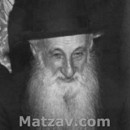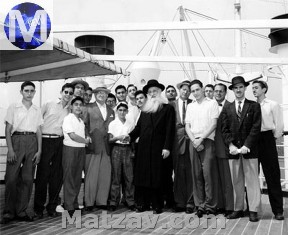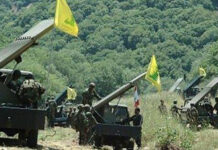 In Poland almost every town had its nickname, which usually afforded an inside view of the life and people of the town. The people of Tiktin were known as “Tiktiner Yachsonim” for practically every Jew in Tiktin considered himself – and indeed was – a yachson (an aristocrat)! One can well imagine the difficulties this nickname represented when the time came to choose a new Rav for the town. Beginning with the first Rav, in the year 1568, all the Rabbonim who served in Tiktin were gedolim (giants of scholarship and stature). (Among them were the Maharsha, the Pnei Yehoshua, and Reb Eizele Charif; the author of the B’eir Heitev on the Shulchan Aruch merely served as a dayan – a member of the rabbinical court.)
In Poland almost every town had its nickname, which usually afforded an inside view of the life and people of the town. The people of Tiktin were known as “Tiktiner Yachsonim” for practically every Jew in Tiktin considered himself – and indeed was – a yachson (an aristocrat)! One can well imagine the difficulties this nickname represented when the time came to choose a new Rav for the town. Beginning with the first Rav, in the year 1568, all the Rabbonim who served in Tiktin were gedolim (giants of scholarship and stature). (Among them were the Maharsha, the Pnei Yehoshua, and Reb Eizele Charif; the author of the B’eir Heitev on the Shulchan Aruch merely served as a dayan – a member of the rabbinical court.)
In my time as well, the town had many ba’alei battim (laymen) who were Torah scholars of the first order. To give you an idea, I shall mention but a few examples: My grandfather (known as Shmuel Leib, the Pikei’ach) would say the blatt (Gemara) every day for 40 or 50 people. In his old age, when he could hardly see, he would recite the Gemara by heart. The city’s mayor, Reb Yisroel Cohn – who was elected despite some desperate gerrymandering by the Polish Government – would study Kodashim with my grandfather every morning before davening. This was in response to the expressed wish of the Chofetz Chaim who, on a visit to Tiktin, urged the towns people and the Kohanim in particular, to prepare themselves for Moshiach’s coming by studying this section of the Talmud that relates to the service in the Holy Temple .. .. Even the winemaker, upon being sentenced to one year in prison for violating the government monopoly on whisky and wine, offered as his only request to the judge that he be permitted kosher food and his Shas (complete set of the Talmud) in jail. While serving his prison term, he learned through the entire Shas!
A RAV FOR THE “YACHSONIM”
No wonder that it was so difficult to find a Rav for such ba’alei battim! Only after much deliberation was a new Rav finally chosen – Reb Avraham Kalmanowitz. He was a talmid (disciple) of Slobodka, formerly Rav of Rakov, and a close friend of Reb Chaim Ozer Grodzenski of Vilna. He was also the founder and head of a kollel, and a leader of Agudath Israel of Poland. As befits a Rosh Yeshivah, he was a great lamdan (analytic scholar) and an articulate speaker. Truly a Rav of the “old school,” he reigned with authority and straight-forwardness, making concessions to neither the rich nor the poor – and wherever he accepted a Rabbanus (a rabbinical appointment) he founded a Yeshivah.
After the First World War, the Mirrer Yeshivah appointed him as its president. He carried the Yeshivah on his shoulders from that time until the last day of his life.
Thus, the Rav accepted the Rabbanus in Tiktin on two conditions: first, that the town support the Yeshivah he planned to establish there; and second, that he be permitted to travel on behalf of the Mirrer Yeshivah for a specific number of months each year.
Nowadays, when one appraises a gadol, one is faced with the question of whether his personality would be of greater influence as a Rosh Yeshivah or as a Rav. In generations of old, every Rav also headed a Yeshivah. However, from the time of Reb Chaim Volozhiner, who founded the first modern type of Yeshivah, the two sacred missions split. We talmidim of Reb Avraham Kalmanowitz felt that time permitting, he was capable of both. In fact, we were convinced that he was even more Rosh Yeshivah than Rav.
The old saying that gedolim derive their knowledge of the Tanach from the Talmud did not apply to him. He was a fervent student of Tanach. During his many travels, the Tanach was his constant companion.
The Rebbitzen was also a meyuchesses (of noble parentage) – as would befit that city of yachsonim. Her grandfather was Reb Bezalel HaKohen, a dayan in Vilna, whose notes, Mareh Kohen, are printed in all of Shas.
 A BORN LEADER
A BORN LEADER
Reb Avraham Kalmanowitz was a born leader; his strong personality and authoritative voice commanded respect of Jew and gentile alike. I remember vividly when a fire broke out one Motzaei Shabbos. Fire was potentially the greatest disaster for Tiktin, a town of many wooden houses. The volunteer Fire Department was extremely primitive. With the clanging of the fire bells, the volunteers came running. The Jewish firemen still seemed half asleep, though long awake from their afternoon nap following the Shabbos meal of kugel and cholent. The Polish firemen were half drunk – having taken an advance nip before Sunday, when they would be totally drunk. Soon the Rav appeared on the roof of a house near the blaze – his imposing figure illuminated by the leaping flames. Up there, it appeared, not only did he get a better view of the rescue operations, but by the flow of his tzitzis and his kapote (frock coat), he could judge the direction of the wind.
Like a field-marshal1 on a battlefield, he stood erect in his knee-high boots, which still glowed from their Erev Shabbos shine. His high velvet yarmulke (skull cap) was tilted to one side, and his hands were moving frantically. With a single command he dismissed the Fire Chief and took personal charge. His orders were obeyed to the letter by Jew and Pole alike.
Amidst the panic and commotion, the Rav stood out like a tower of calm stability and authority.
HEADQUARTERS IN THE UNITED STATES
At the beginning of World War II the Rav and his family reached the United States, while his beloved Mirrer Yeshivah escaped from Mir to Vilna, to avoid Soviet persecution. At that time, Vilna – like the entire Lithuanian Republic – was only a temporary haven, for Russia would soon swallow the entire little country. The Yeshivah moved again – this time from Vilna to Keidan, until emigration procedures could be arranged.
The Rav began to work frantically, knowing that he was fighting for time. His first job was to secure passports, as no one could travel without them. The Polish Embassies at once tripled their passport issuing fee, thereby increasing the Rav’s burden. When he finally took care of the passports, emigration was the next problem – Where to? The British sealed Palestine, and President Roosevelt and the Congress closed the doors to the United States. Time was running out… Visas to Curacao as an ultimate destination were secured from the Dutch consulate, and Japanese transit visas were obtained. A new financial problem arose. The Yeshivah would have to travel through the USSR and Intourist, the exclusive means of transport in the Soviet, suddenly doubled the price, and demanded American dollars in payment.
A fortune had to be raised immediately. The Rav did not rest until his beloved Yeshivah was safely on its way across Siberia.
When the Yeshivah finally arrived in Vladivostok, and from there by boat to the Japanese port of Kobe, Japan bombed Pearl Harbor. This new turn of events worried the Rav greatly. How would the Japanese treat the bnei Torah? Would they be influenced by the virulent anti-Semitism of their German allies? Would they tolerate Europeans in general? To make matters worse, after the U.S. declared war on Japan, the Polish Government in Exile followed suit, making all who carried Polish passports enemies of Japan. Food was of equally pressing concern. Even if the Japanese did not mistreat the Jews, they certainly would not feed them gratis.
THE POST PEARL HARBOR REALITY
The dilemma seemed insoluble. The American people were bitter against the Japanese, as thousands of Americans were dying in battle against them. And in this negative climate of opinion, an elderly Rabbi was searching for avenues for sending large sums of American dollars to Japan! – Aiding the enemy!
The Rav knew that a decision regarding such an important and sensitive matter could not come from just any official in the State Department, so he went directly to the Secretary of the Treasury, Henry Morgenthau, Jr. How could an old Rav with a limited English vocabulary explain to an assimilated Jew that he too suffered a Pearl Harbor – an attack on Torah? His “children,” the b’nei Torah of Mir, were starving in Japanese captivity!
While presenting his case before the Secretary in his office, the Rav fainted. That broke the ice, and the Rav was informed that the money could be sent via Switzerland. Now all that remained to be done was to raise the necessary funds, without revealing their destination in public.
The mesiras nefesh (overwhelming devotion) of the Rav is best exemplified in the following episode related by Rabbi L. B. Friedlander of Baltimore:
While staying at the home of Rabbi Friedlander, the Tiktiner Rav told his host one evening that he would be leaving the following morning to keep an appointment in Washington D.C. During the night, a heavy snowfall covered the streets, and taxi cabs were not running. At four A.M. Rabbi Friedlander heard the Rav leaving the house.
“Where are you going at such an early hour?” he asked.
“Since taxis are not running I’m walking to the station,” Rabbi Kalmanowitz replied. “I cannot miss the appointment. Our children are freezing in Siberia, and starving in Shanghai, and we are sleeping in comfort.”
Rabbi Friedlander adds, “It was only then that I noticed that he did not even have galoshes on his feet!”
Then came the dreadful news from Europe that Hitler was systematically annihilating Jews. Something had to be done. In those days, a march on the White House was a rarity, but that did not prevent the Rav from organizing one together with the Agudas Horabbonim. 350 Rabbanim gathered in front of the White House to pray, say Tehillim, and request a meeting with the President. President Roosevelt sent back a message saying that he did not have the time to receive the delegation. Finally Vice President Henry P. Wallace received the delegation in his stead.
When the Vaad Hatzalah – the rescue arm of American Orthodox Jewry – was founded, the Rav was one of the leading personalities, working feverishly to save lives.
REUNION IN MUNICH
As soon as the war ended, no American civilian had as yet received permission to enter occupied Germany but the Rav smuggled himself in via Czechoslovakia. His ahavas Yisrael (love for his fellow Jew) and his stormy heart would not let him rest until he visited all the Shearis Hapleitah – the remnants, who had survived.
I heard that he was coming to Munich and I waited for him at the railroad station. We embraced, kissed, and cried, and he burst out, “Chaim, thank you for staying alive! Baruch HaShem!” It sounded strange to be thanked for remaining alive. But it was not strange, for it came from Tiktiner Rav!
Later in our conversations he revealed his agonies, and how depressed and discouraged he was. “We needed $200,000 to rescue the Yeshivah from Shanghai,” he said.
He then continued, “I came across a Midrash Tanchuma relating how the lion in the Ark wounded Noach for arriving late with his meal. Mind you: Noach and his family, a handful of people, were taking care of all those animals. Noach must have been exhausted, depressed, and worn out. Should he have been maimed for coming five minutes late? It dawned on me, however, that this was no ordinary lion. This lion was the last of a species. The very last! And had he died, there would not have been a lion in the entire world, for there was not going to be another Creation! So how dare you, Reb Noach, be late?
“I suddenly realized,” continued the Rav “that the Mirrer b’nei Torah are not ordinary Yeshivah boys. They are the last of a species. Then how did I dare be worn out?”
He worked tirelessly, as only a father would – to rescue his children, the remnants of the European yeshivos. But he also made sure that they would not be the last of a species – by founding the Mirrer Yeshivah in Brooklyn. He also imported new talmidim from the Maghreb. Then, as a great general falls in battle, he fell in the struggle for Torahs survival.
To his talmidim, admirers, and to all who owe him their very lives, he was indeed the last of a unique species, a man who served Hashem with inexhaustible zeal.
{By Chaim Shapiro/This article originally appeared in the Jewish Observer and is also available in book form in the ArtScroll/Mesorah Publications Judaiscope Series.}
{Matzav.com Newscenter}











